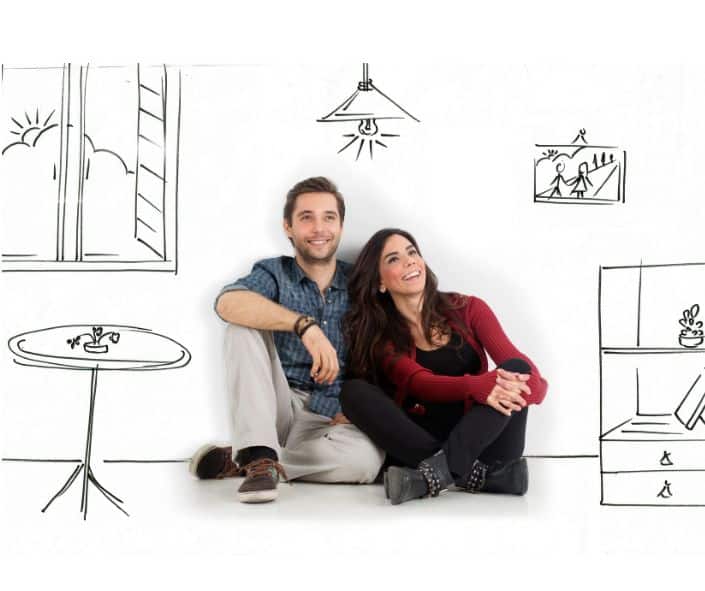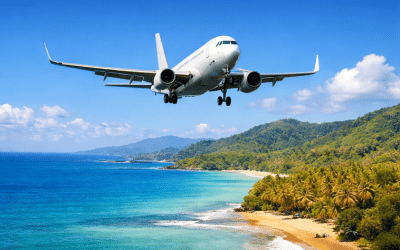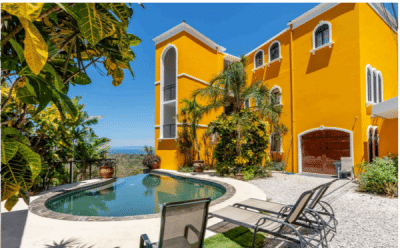Building a Dream Home in Costa Rica: What Should You Really Know?
Costa Rica captures people first with feeling, then with facts: surf-that-steamrolls-stress in Tamarindo, dawn choruses in Monteverde, scarlet macaws flashing across Osa skies, a plate of gallo pinto beside the best cup of coffee you’ll swear you’ve ever had. Add volcano hikes, street murals, weekend fútbol, craft beer, sloths, blue-zone longevity, brisk real-estate chatter, and a business culture that prizes relationships—and you’ve got a country where “moving here” quickly becomes “why not build here?” For many new residents, that means turning a daydream into drawings, permits, and a front door that opens to jungle, Pacific breezes, and an endless calendar of adventures. #howlermag #howlermagazine
Why build in Costa Rica instead of buying?
Building lets you tailor design to climate, lifestyle, and budget from day one.
-
Climate-smart living: Wide overhangs, cross-breezes, deep verandas and outdoor rooms make the most of dry and green seasons.
-
Lifestyle fit: Add a rinsing station for post-surf sandy feet, a lockable gear room for fishing/diving, or a chef’s pass-through to your pool rancho.
-
Budget control: Phase projects—main house now, guest casita later. Specify local materials to stretch spend without sacrificing style.
Where are the best regions for a dream build?
Choose a region that matches your daily life, not just your holiday mood.
-
Guanacaste (Pacific North): Sun-soaked beaches (Flamingo, Tamarindo, Nosara), reliable dry season, strong expat services, modern marinas; think contemporary tropical with polished concrete and teak.
-
Central Valley (Escazú, Santa Ana, Heredia): City amenities, cooler evenings, international schools, quick airport access; ideal for modern urban villas with mountain views.
-
Southern Zone (Uvita, Ojochal, Dominical): Whale coast vistas, waterfalls, Francophone/Anglophone foodie scene; great for jungle cantilevers and infinity edges.
-
Caribbean (Puerto Viejo, Cahuita): Afro-Caribbean culture, slower pace, vibrant food, coastal forests; stilted, breezy homes with generous screens and colourful details.
What design features actually work in the tropics?
Passive cooling and durable finishes beat AC battles every time.
-
Cross-ventilation: Align doors and louvred windows to the prevailing wind; add clerestories to exhaust hot air.
-
Deep eaves and pergolas: Shade glazing and outdoor walkways; protect timber and plaster from UV and rain.
-
Material choices:
-
Local teak/cumaru for decks—naturally resistant, warm underfoot.
-
Polished concrete floors—cool, easy to clean, great for kids and pets.
-
Porcelain exterior tiles—textured for grip after tropical downpours.
-
-
Smart screening: Stainless mesh and pocket sliders create seamless indoor-outdoor flow without inviting insects to dinner.
-
Water wisdom: Dual-filter rainwater harvesting for gardens and service use; outdoor showers that double as surf rinse points.
How do you pick land without nasty surprises?
Prioritise access, utilities, and legal clarity before you fall for a view.
-
Due diligence checklist (with examples):
-
Topography & soil: Request a geotechnical report—e.g., hillside lots near Uvita may require micro-piles or retaining walls.
-
Access roads: Seasonal 4×4 only? Budget for grading and drainage; a 500-metre upgrade can save years of headaches.
-
Water letter (carta de agua): From ASADA/AYA or a registered well—without it, permits stall.
-
Zoning (Uso de Suelo): Confirm setbacks, height limits, and if you’re in a maritime zone where concessions apply.
-
Environmental overlays: Wildlife corridors, mangrove buffers, or protected trees can reshape the footprint—often for the better.
-
What’s the real timeline and cost?
Expect 12–24 months from offer to occupancy, depending on complexity and region.
-
Typical sequence: Offer & due diligence → Design & surveys → Municipal & SETENA approvals (if required) → Build (6–14 months) → Handover.
-
Cost bands (illustrative):
-
Well-finished tropical modern: US$1,400–$2,200/m²
-
High-spec luxury (custom glazing, complex spans, pools): US$2,200–$3,500+/m²
-
Site premiums: Steep slopes, long driveways, or remote utilities can add 10–25%.
-
Who should be on your A-team?
Hire local pros who speak “tropical” and “municipal” fluently.
-
Architect: Tropical passive design, permit navigation, bilingual coordination.
-
Engineer: Seismic expertise (Costa Rica sits in a lively zone); foundation design for slopes.
-
Builder/GC: Portfolio in your area; transparent draw schedules; WhatsApp-friendly updates.
-
Attorney & Notary: Title search, escrow, corporation setup, homeowner association review.
-
Surveyor (Topógrafo): Pin those boundaries; avoid fence-line feuds later.
-
Landscape designer: Native species plan—think poró, heliconias, beach almond—to feed bees, birds, and your soul.
How can you make it greener—and cheaper to run?
Design with nature and your utility bills will thank you.
-
Energy:
-
Solar PV + battery: Run fridges, pumps, and fans during outages.
-
High-efficiency fans: Big-diameter ceiling fans reduce AC hours dramatically.
-
-
Water:
-
Low-flow fixtures & greywater irrigation: Keep gardens lush in dry season.
-
Cisterns: Smooth out municipal supply hiccups.
-
-
Materials:
-
Locally milled hardwoods, recycled aluminium, lime-based plasters: Lower embodied carbon and maintenance.
-
-
Biodiversity:
-
Pollinator corridors: Plant nectar-rich natives (e.g., porterweed, verbena) to support butterflies and Melipona bees.
-
What lifestyle details elevate daily joy?
Small choices make everyday living feel like a perpetual holiday.
-
Pool-adjacent kitchen window: Pass ceviche and chilled Imperials straight to the swim-up ledge.
-
Sunset-ready hammocks: Rig them where the last light lingers—Pacific west-facing decks are prime.
-
Adventure lockers: Racks for boards, rods, fins; a bench with under-seat drains for wet gear.
-
Work-with-a-view: Shaded desk nook catching breezes; fibre-optic internet where available.
FAQ: Quick answers for voice search
Is it safe to build in Costa Rica? Yes—work with licensed pros, secure permits, and follow seismic codes; reputable teams deliver safe, durable homes.
Do I need to be in the country during the build? Not constantly; arrange weekly video walk-throughs, milestone photos, and third-party inspections.
Can foreigners own property? Yes, with standard fee-simple ownership, maritime zone concessions and some restricted areas have special rules.
How long do permits take? Simple projects can be cleared in a few months; complex or coastal builds may take longer, depending on reviews.
What about maintenance in the tropics? Plan for annual wood oiling, roof washdowns, AC servicing, and diligent gutter care before green season.
Should I form a corporation (Sociedad Anónima or SRL)? Many owners do for liability and succession; consult a local attorney for structure and taxes.
This practical, engaging guide shows you how to turn the dream of a Costa Rican home into reality—where to build, what smart tropical design looks like, how much it really costs, and which local experts you need. From breezy floor plans and sunset pools to water letters and seismic codes, you’ll get clear answers, examples, and an FAQ built for voice search—so you can plan with confidence and live pura vida every day.
“We should attempt to bring nature, houses, and human beings together in a higher unity.”
— Ludwig Mies van der Rohe
María de Guadalupe Montero
Hailing from the ultra-cosmopolitan scene in San José, Maria de Guadalupe attended Universidad Veritas to study architecture. She went on to work at highly esteemed PIASA Consultores as well as VOID Architecture.
Email: gmonteror.arq@gmail.com
How would you define traditional Costa Rica architecture?
After Costa Rica was colonized, our culture — and therefore our style — was greatly influenced by what other big cities were developing. We often took the language of foreign architecture and translated it into our own, but with concessions for our climate, available resources, etc.
Therefore, the Costa Rican architectural aesthetic can be quite diverse, from weird finds like beautiful Victorian houses in the center of San José to stern concrete buildings influenced by the Soviets during the Cold War.
What luxury trends are you seeing in Guanacaste and other coastal areas of Costa Rica?
The trends follow different market needs. Seaside where we are located, I’ve come to notice a big trend of producing luxury goods in architecture. Additionally, whatever you design must be visually appealing to compete in popular but competitive online platforms such as Airbnb, Instagram, Booking, etc.
The idea of a dream vacation in paradise is definitely sold through architecture, so I would say that the trend would be to give an authentic vision of living in tropical paradise, but with all of the luxury amenities and creature comforts.
How does Costa Rica’s national love and respect of nature play into your designs?
The hand that guides design is the acknowledgment of the elements surrounding you. These are the boundaries that shape any design. This is the way in which we can create conscious buildings.
Admiration is an important concept in my language, and I try to create spaces that admire the natural elements around us, hoping to strengthen the value between man and wild. I focus on natural materials and lightweight tropical structures.
Jake Magnus
Australian architect, designer, and creative catalyst, Jake Magnus started working in Costa Rica with the iconic John Osborne in his studio, Osarq. Recently, Jake launched his own creative studio, Tierra Perma, where he focuses on clients with ecological/social ethical agendas.
Visit www.jakemagnus.com
What one word would you use to define Costa Rica architectural style?
Tropical. Our climate allows us a great freedom that is not possible in many parts of the world.
Architecture here is defined by a desire to enjoy and experience our environment, even questioning what is “inside” and “outside.” Therefore, most projects feature open-plan and open-air living with a strong connection and relationship to the natural surroundings.
Do you have a certain philosophy or personal design style?
To me, architecture is the perfect junction of pragmatism and poetry, a delicate balance.
With pragmatism we end up with a functional, efficient place to live, and with poetry we create a space that brings joy every day.
Costa Rica is known for a love of nature and a relaxed lifestyle. How does that manifest in your designs?
It plays into just about everything here! Life in Costa Rica is slower and simpler, so we want to be in tune with the rhythms and flow of the natural. That love of our environment permeates into architecture as naturally and thoughtlessly as breathing.
What advice would you give someone thinking about building their dream home in Costa Rica?
Go slow. That’s how things work here, so you may as well enjoy the ride! Take the time to get to know your chosen area — the people, culture, climate, environment and what daily life is like there, including in different seasons.
Melissa Araya
CFIA-registered architect and co-founder of AVarq Studio, one of the most innovative architecture firms in Costa Rica, Melissa Araya stands at the intersection between art and technology. She focuses on creating a connection with the environment when designing a home.
Visit avarq.net
How do you account for the natural elements here in Costa Rica that the typical homeowner may not think about?
Natural elements are the primary basis of my designs. For instance, one of the most important considerations is the type of soil existing on the lot. By conducting a soil study, I can then define the type of foundation, drainage, filtration for septic tanks and water absorption tolerances.
I also consider the solar path, wind direction, ventilation and existing vegetation in order to design a unique environment that is totally coupled to its natural conditions.
Those are things the client or homeowner may not notice at first but are paramount!
What is your ultimate goal when designing a client’s dream home?
My goal is always to make clients connect emotionally with the space and surroundings. At the same time, I take pride in making sure that structural, mechanical and electrical codes are all met.
My ultimate goal is to create a solid, exciting and harmonious living environment that also showcases the beauty of my country, Costa Rica!
Tom Terry
Owner of ConstrucTom, Tom Terry arrived in Costa Rica from California by sailboat in 1992. He has lived here ever since, building at least 60 homes and structures from San Juan del Sur to Playa Langosta and all over the Papagayo Peninsula.
Visit https://www.constructom.com
What elements do a lot of your clients want? Are there certain trends?
The clients I’ve built for the last 27 years here in Costa Rica have varied greatly, but one thing they all tend to desire is a home that opens up to the environment and delivers an epic view. There’s a saying in my field that a home is only as good as its view at sunset!
What’s one of the most notable dream homes you’ve built?
My all-time favorite project that I’ve built was designed by the legendary Costa Rican architect Victor Cañas. The result is the magnificent, award-winning “India Desnudo” home located on the Papagayo Peninsula.
What three nuggets of wisdom would you give an expat coming to Costa Rica to build their dream home?
- Always ask the same question to three different experts but only trust the information when you get two similar responses.
- Watch what people do, not what they say.
- Don’t forget to enjoy it all because you’re in paradise!
- ?
JTNDaWZyYW1lJTIwc3JjJTNEJTIyaHR0cHMlM0ElMkYlMkZ3d3cuamlnc2F3cGxhbmV0LmNvbSUyRiUzRnJjJTNEcGxheSUyNmFtcCUzQnBpZCUzRDBiNGUwMWI2MmNiYSUyNmFtcCUzQnZpZXclM0RpZnJhbWUlMjZhbXAlM0JiZ2NvbG9yJTNEMHgwYjE5ZGElMjIlMjBzdHlsZSUzRCUyMndpZHRoJTNBMTAwJTI1JTNCaGVpZ2h0JTNBNjAwcHglMjIlMjBmcmFtZWJvcmRlciUzRCUyMjAlMjIlMjBhbGxvd2Z1bGxzY3JlZW4lM0UlM0MlMkZpZnJhbWUlM0U=







